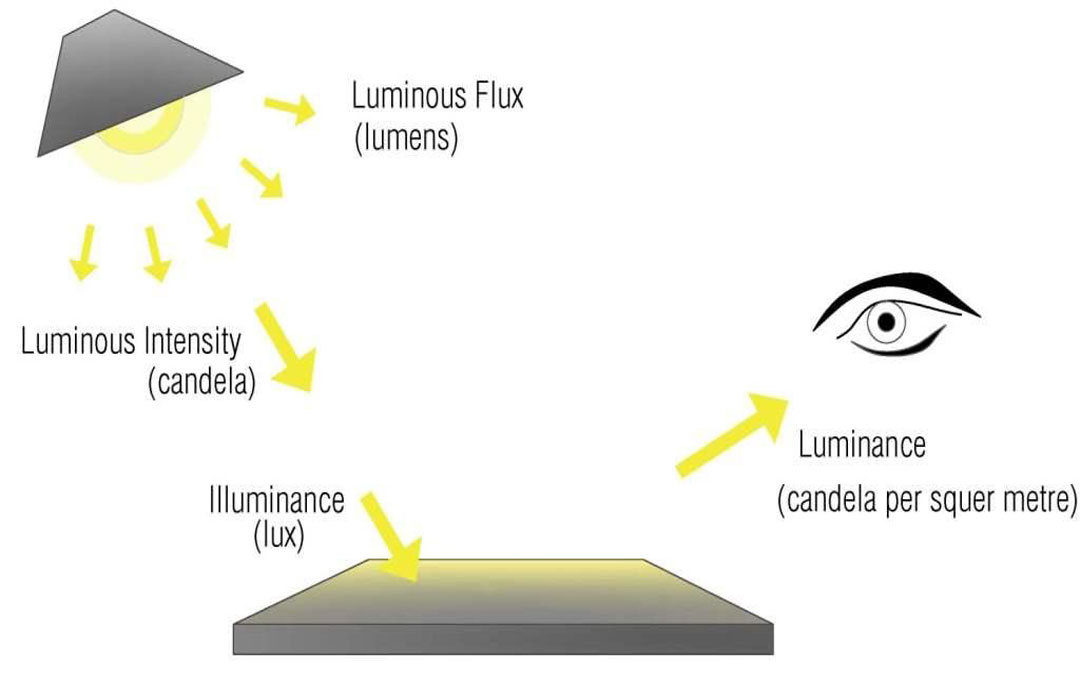Using the right flashlight for each task we have to perform is essential.
A mini 5 lumen search and rescue flashlight probably won’t help us much and using a flashlight like the Sofirn SC31 Pro will be more than what you need when we want to light up our driveway at night.
Knowing how to read the technical characteristics of a light source is therefore very useful for making the right purchases. To help you in this article, we remind you in the simplest way possible the differences between the various units of measurement and their derivatives: lumen, candles, lux, Watt and Kelvin.
(Would you like to receive the Italian Prepper articles on your smartphone? Subscribe to our Telegram channel )
What is a lumen?
Lumen (lm) is a measure of how much light is emitted in all directions. More lumens means more brightness.
In order to understand each other:
- a birthday candle: 1 lumen
- phone flashlight: 80 lumens
- 40 watt incandescent bulb: 460 lumens
- 60 watt incandescent bulb: 800 lumens
- bulb of a car headlight: 1500 lumens
- Sun: 36,200 trillion trillion lumens
Lumen is the main unit of measurement of light and indicates the luminous flux . The higher the lumen value, the more light the source emits. One of the “flaws” of this unit of measurement is that it can only be used for light sources that emit light in all directions. For projectors, but also for domestic reflector lamps, which generate a more or less concentrated light, we speak of light intensity, measured in candles.
What are candles?
Candles (cd) help to understand how focused and intense a light source is.
Candles measure the intensity of light in one direction only.
The term candle derives from the abbreviation of “candle power”. It is a measure of intensity , rather than brightness.
Trying to put the mathematical formulas aside, we can therefore say that a higher candle indicates a longer beam distance because the brighter light travels farther. Put simply, the brightest light (tallest candle) will travel farther than light of lower intensity (lower candle).
Flashlights with a high candle value are good for increasing visibility in smoke and fog or if you want a focused beam.
If, on the other hand, you want an area that is evenly lit, with a dimmer spot and you do tasks in close proximity, like reading a map, a torch with a lower candle is for you!
1 candle = 12.57 lumens
Often, lumens and candles get confused in the same way as “voltage” and “current”.
A lumen rating does not consider the diffusion of light emitted in degrees, while that of candles does. For example, a standard fluorescent lighting fixture that emits a wide spread beam may have a rating of 1,700 lumens and 135 candelas. But if the emitted light is narrowed and made to shine within a radius of 20 degrees, its candle value will increase to 18,000.
Lumen and Watt
Watt is the unit of measurement of power , that is the consumption of electricity necessary for that bulb to turn on and reach the point of maximum incandescence, and therefore of maximum illumination. It has nothing to do with brightness, that is, with the amount of light that a light bulb is able to give off.
A rule that we can apply to have a value, albeit approximate , of the lumen / Watt ratio for the LEDs is to multiply the number of Watts by 100 to obtain the corresponding lumens. The calculation will not be accurate because the lumen / Watt conversion ratio also varies based on two factors: type of light emitted (whether hot or cold) and light output. With the same Watt therefore we will be able to find torches with different lumen number: 6W could correspond to 400 lumens or if of excellent quality even to 750 lumens.
What do the Kelvins mean?
Kelvins measure the color temperature of light.
Light bulbs that tend towards yellow produce a warmer light, those with cold light produce a colouration closer to blue. The higher the Kelvin number, the bluer the light.
Sunlight at noon, also known as “Natural Light” , has a color temperature of 5500 K. Warm fireplace light has a color temperature of 2000 K. Industrial-grade neon light reaches 7000 K.
What does the Lux measure?
Lux (lx) is a quantity used to measure light on a particular surface . The Lux changes according to the distance between the surface and the light source. This means that, using the same light source, the lux detected on a surface will increase as the torch is closer to it and decrease as the light source moves away.
‘Lux’ is another way to measure the intensity of light. It is short for “luminous flux” and changes according to the distance of the illuminated area from the light source.
One lux equals one lumen per square meter (lux = lumen / m ^ 2). For example, full daylight has around 10,000 lux, a cloudy day has 1,000 lux. The full moon, 0.1 lux and a quarter moon, 0.01 lux.
Lasers have lower lumens but higher lux. Therefore, a laser has a large range but with a very small radius. The projectors have higher lumens but lower lux, so they are perfect for illuminating large areas but at short distances.
Since flashlights are designed to be carried and not stay in a fixed position, lux can be overlooked when choosing the best flashlight for you. Lux is ignored when considering flashlights because the same flashlight will provide different lux values depending on its distance from the surface and not because of its output brightness. That’s why you will hardly hear about it.









